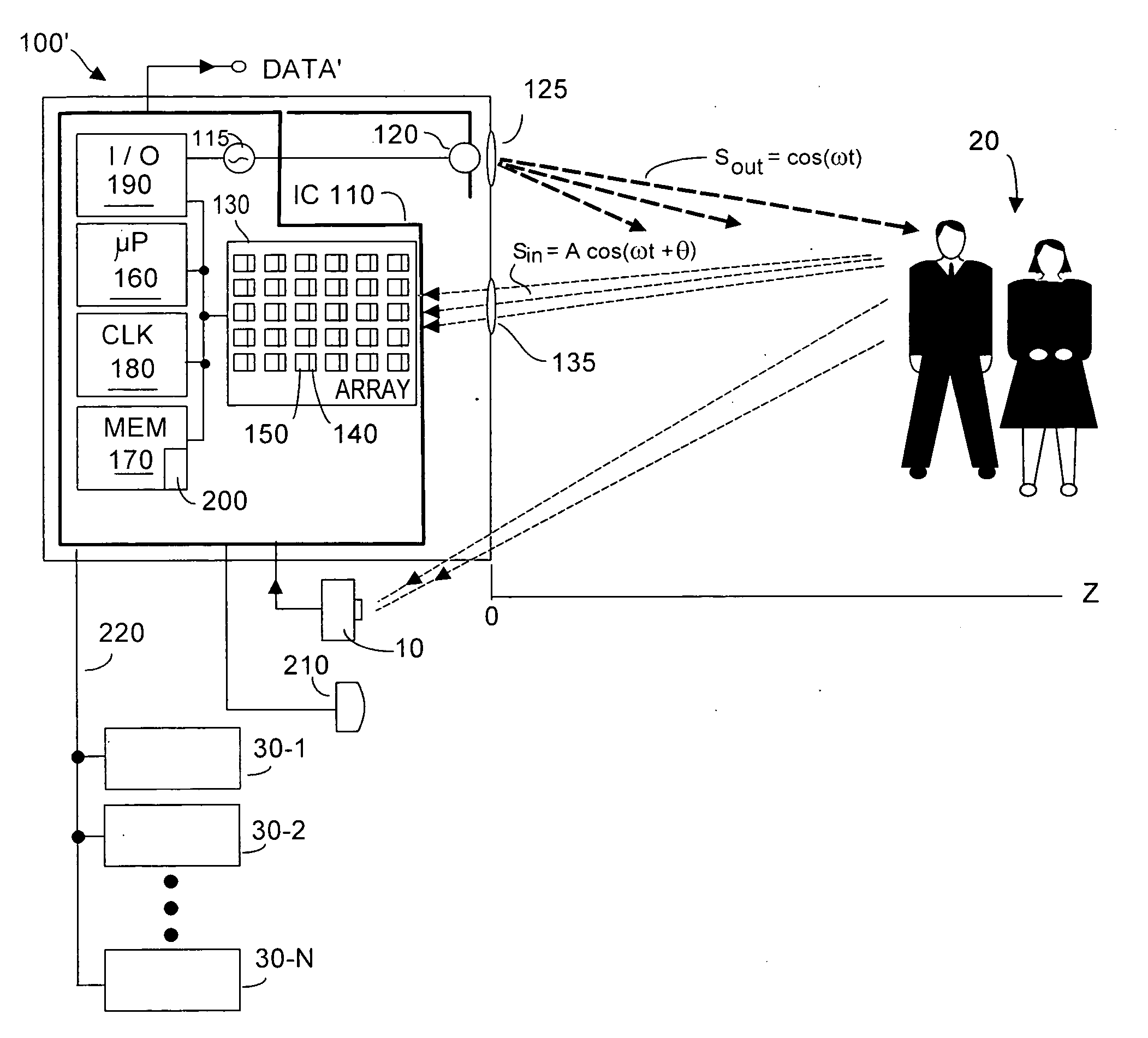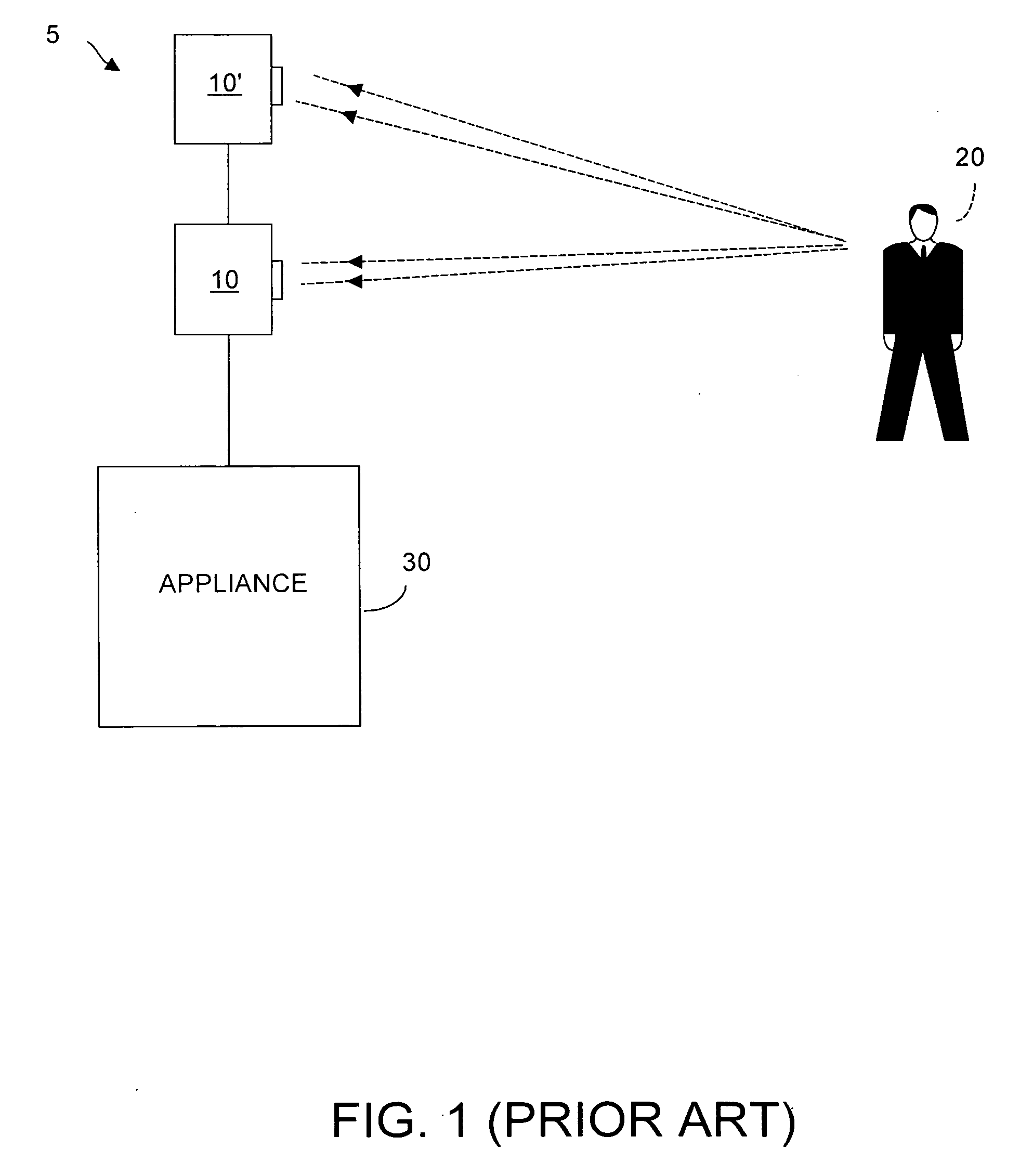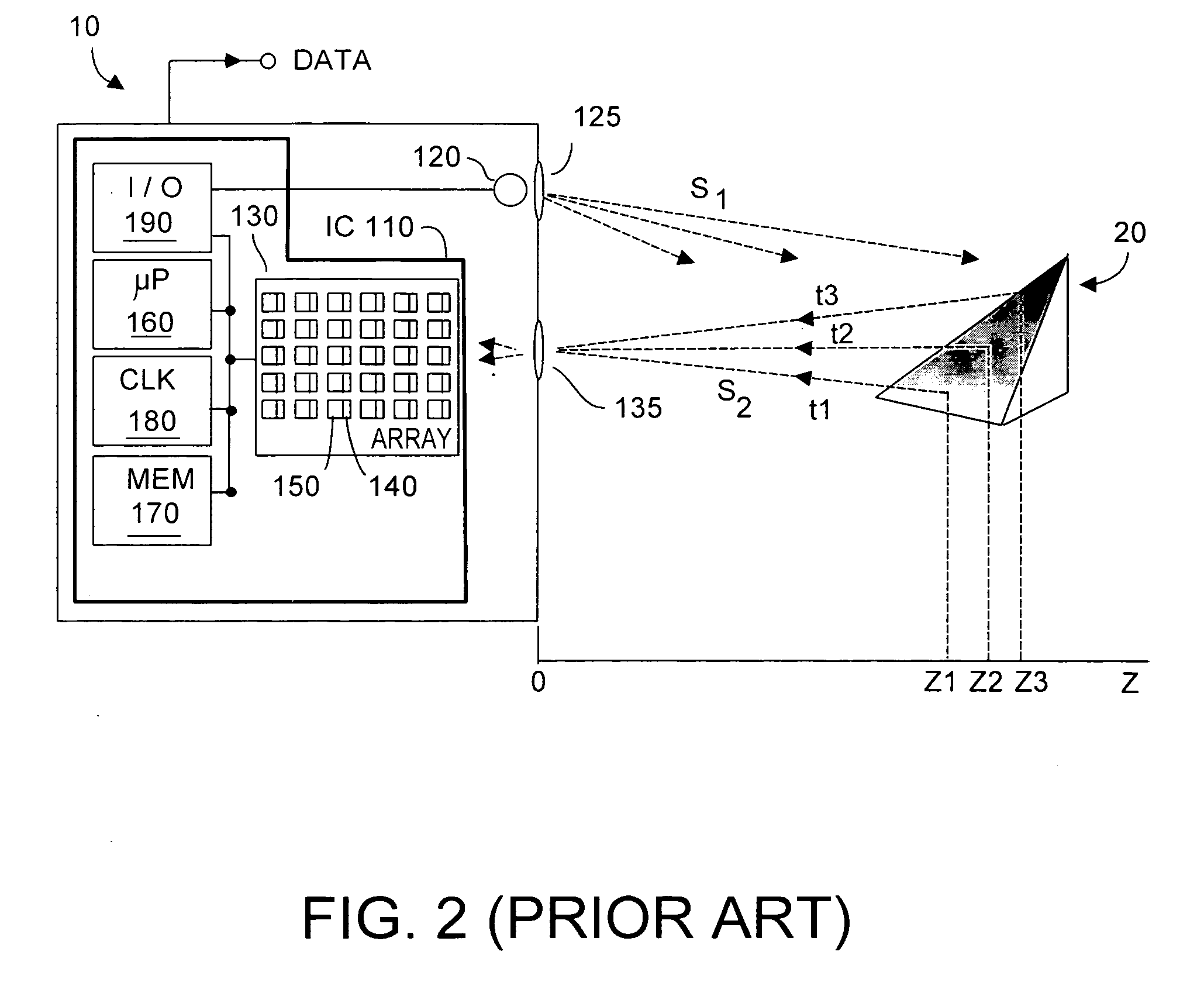Methods and systems using three-dimensional sensing for user interaction with applications
a technology of user interaction and application, applied in digital data authentication, instruments, computing, etc., can solve the problems of confusion, one or even two camera sensors (stereographically spaced-apart) can not be meaningful, stereographic data processing is accompanied by very high computational overhead, and camera sensors rely on luminosity data
- Summary
- Abstract
- Description
- Claims
- Application Information
AI Technical Summary
Benefits of technology
Problems solved by technology
Method used
Image
Examples
Embodiment Construction
FIG. 4 depicts a three-dimensional system 100′ used to enable interaction by at least one user.20 with one or more appliances or devices, depicted as 30-1, 30-2, . . . , 30-N, in addition to enabling recognition of specific users. In some embodiments, an RGB or grayscale camera sensor 10 may also be included in system 100′. Reference numerals in FIG. 4 that are the same as reference numerals in FIG. 3A may be understood to refer to the same or substantially identically functions or components. Although FIG. 4 will be described with respect to use of a three-dimensional TOF system 100′, it is understood that any other type three-dimensional system may instead be used and that the reference numeral 100′ can encompass such other, non-TOF, three-dimensional imaging system types.
In FIG. 4, TOF system 1Q0′ includes memory 170 in which is stored or storable software routine 200 that upon execution can carry out functions according to embodiments of the present invention. Routine 200 may be...
PUM
 Login to View More
Login to View More Abstract
Description
Claims
Application Information
 Login to View More
Login to View More - Generate Ideas
- Intellectual Property
- Life Sciences
- Materials
- Tech Scout
- Unparalleled Data Quality
- Higher Quality Content
- 60% Fewer Hallucinations
Browse by: Latest US Patents, China's latest patents, Technical Efficacy Thesaurus, Application Domain, Technology Topic, Popular Technical Reports.
© 2025 PatSnap. All rights reserved.Legal|Privacy policy|Modern Slavery Act Transparency Statement|Sitemap|About US| Contact US: help@patsnap.com



